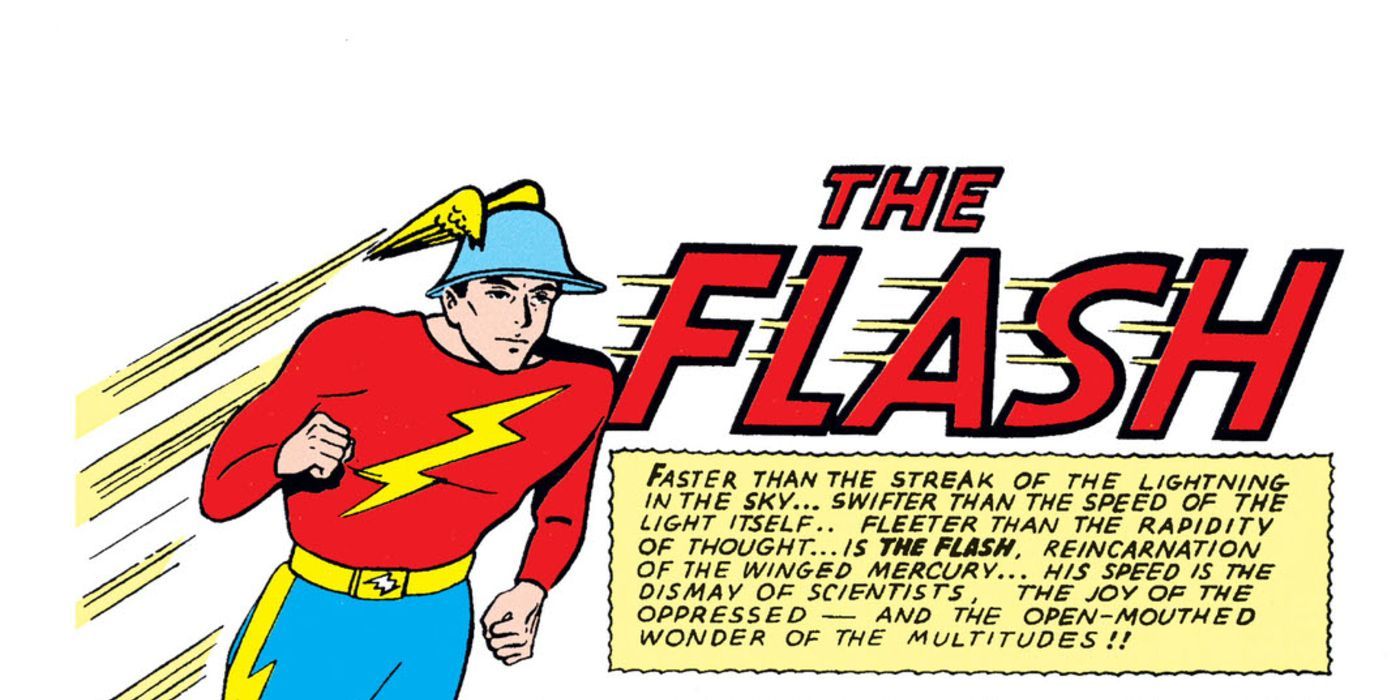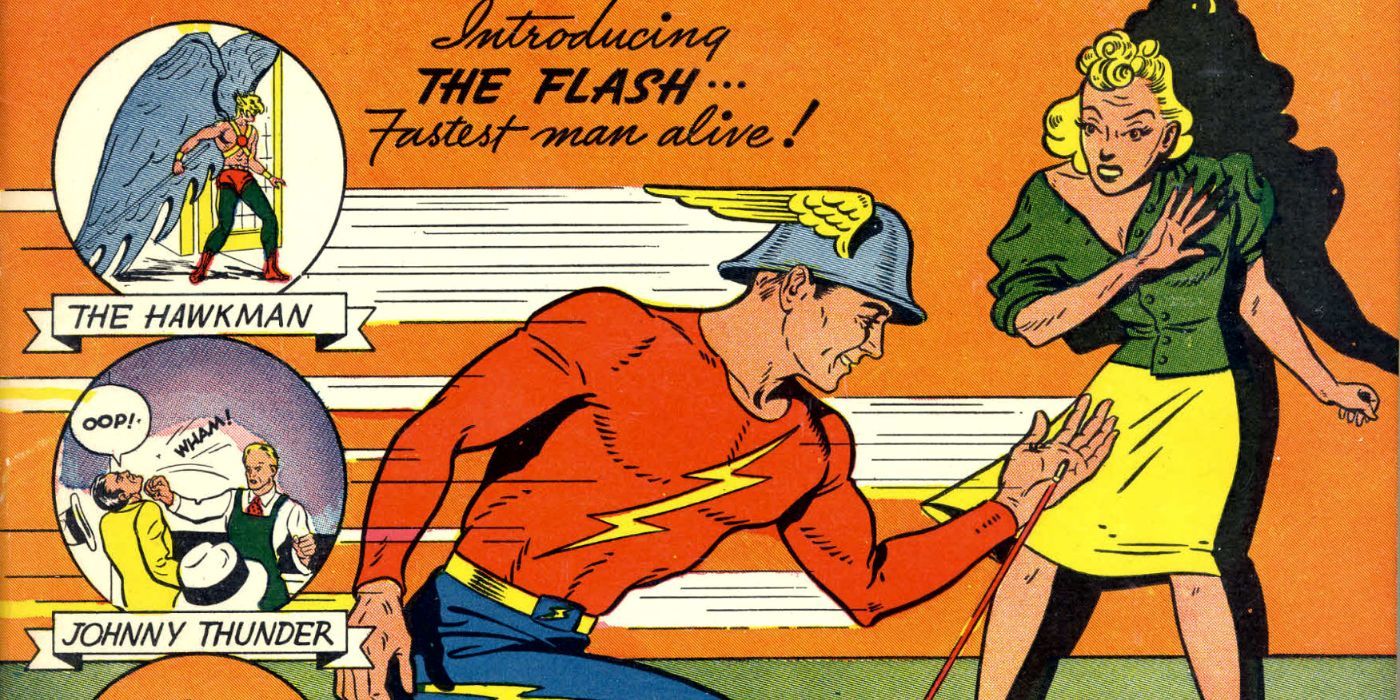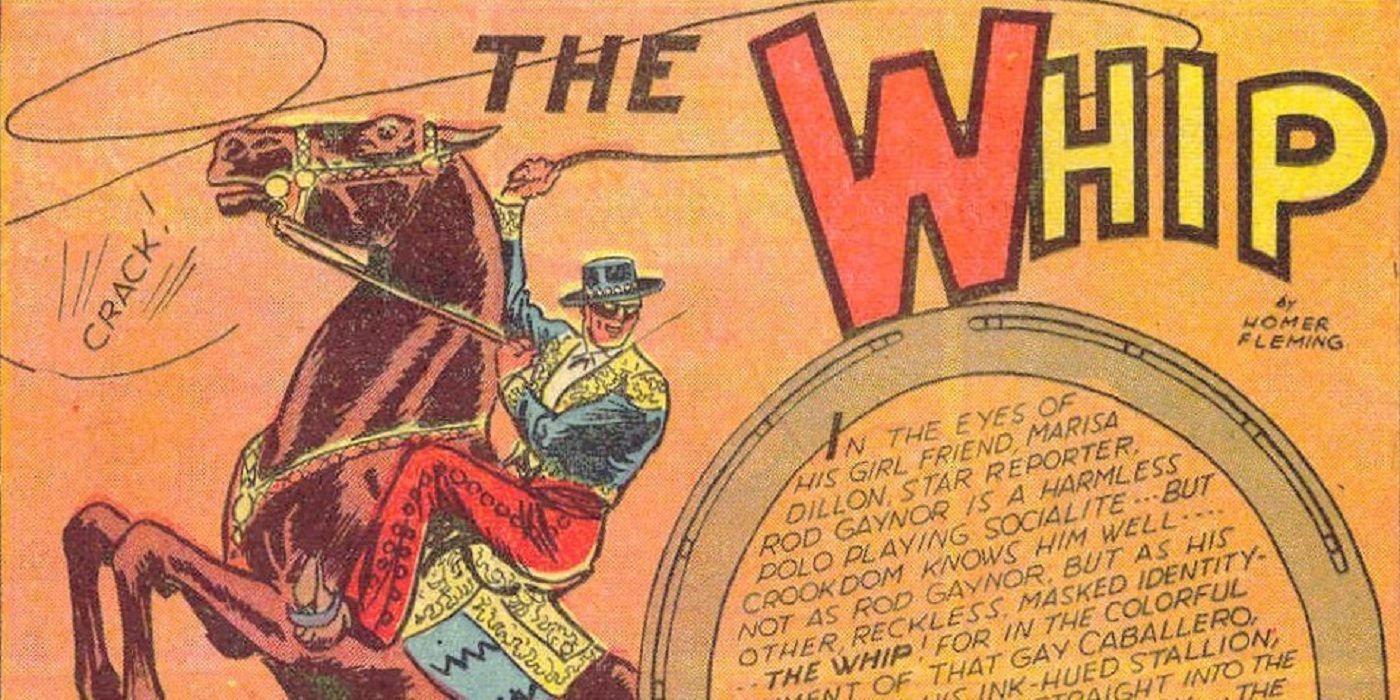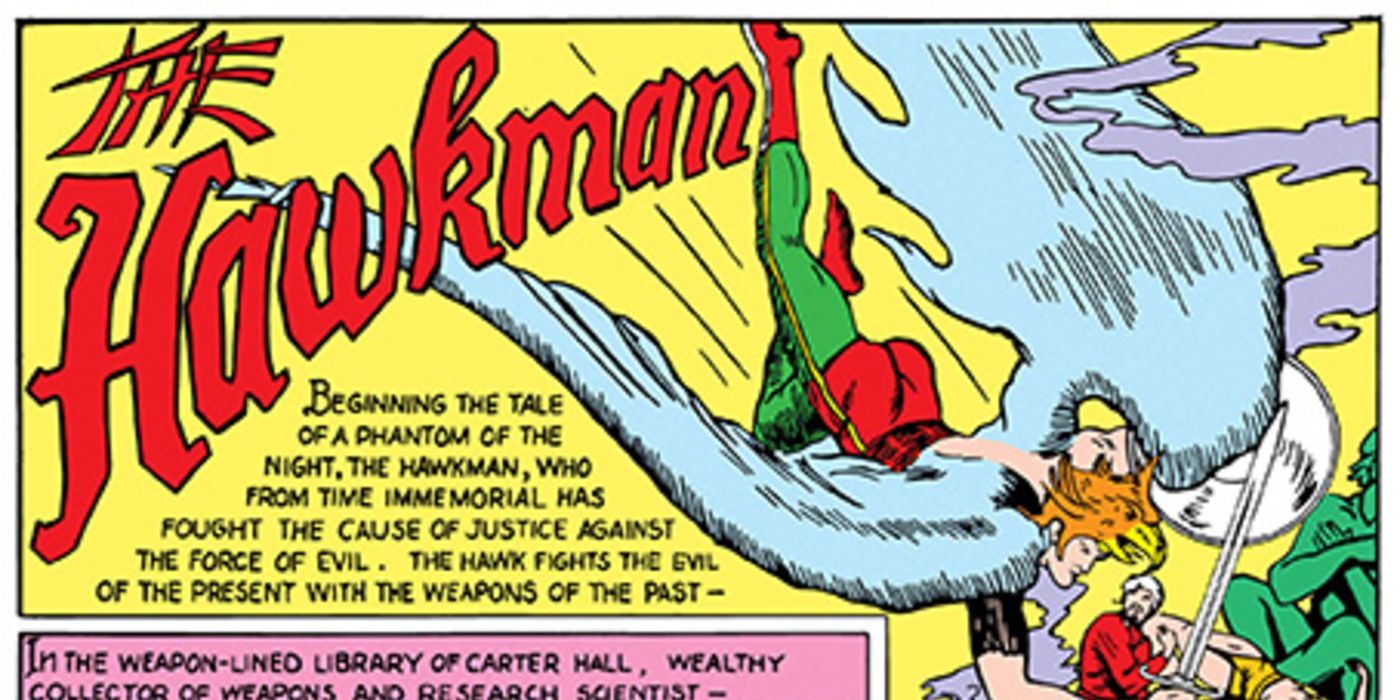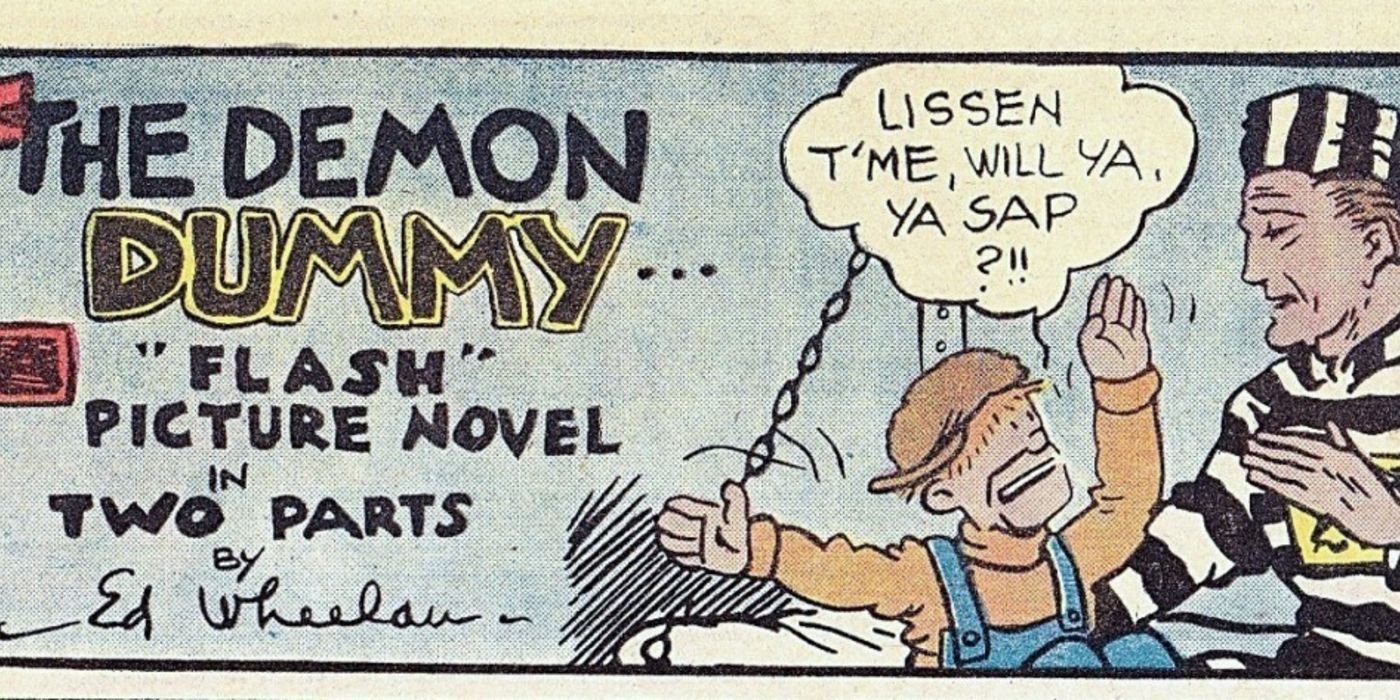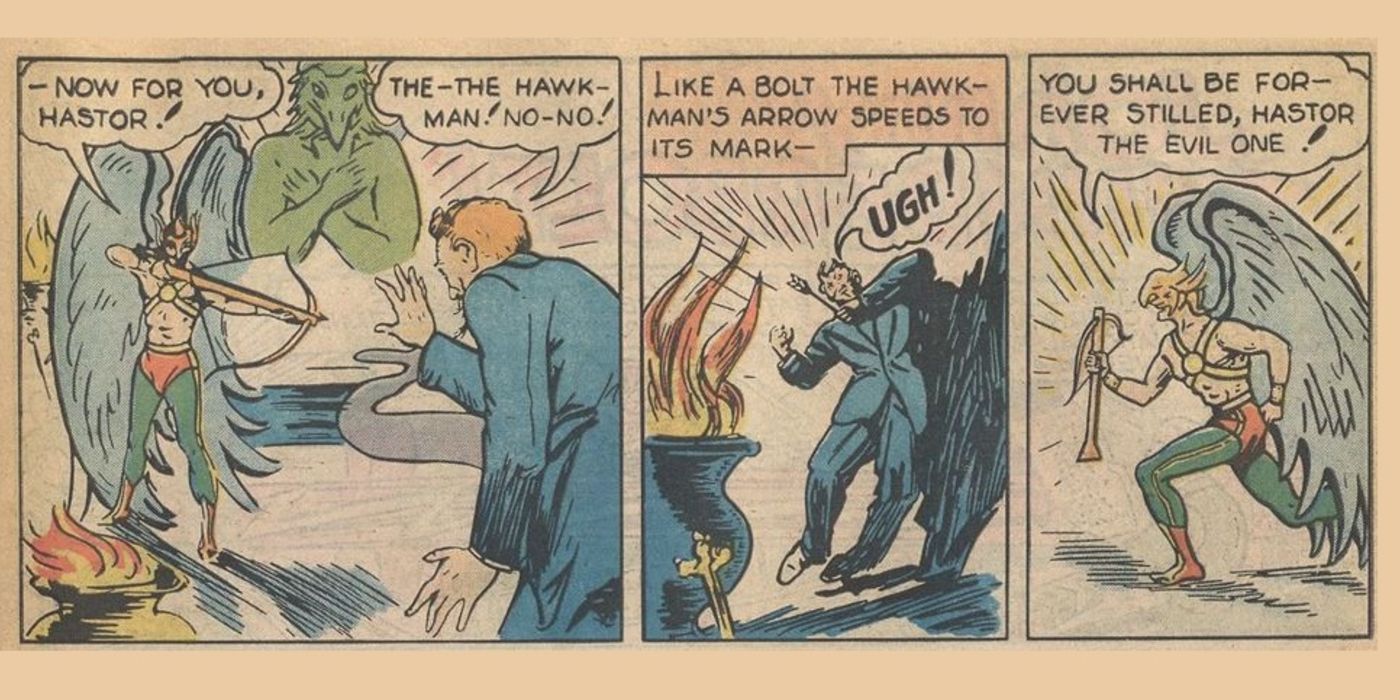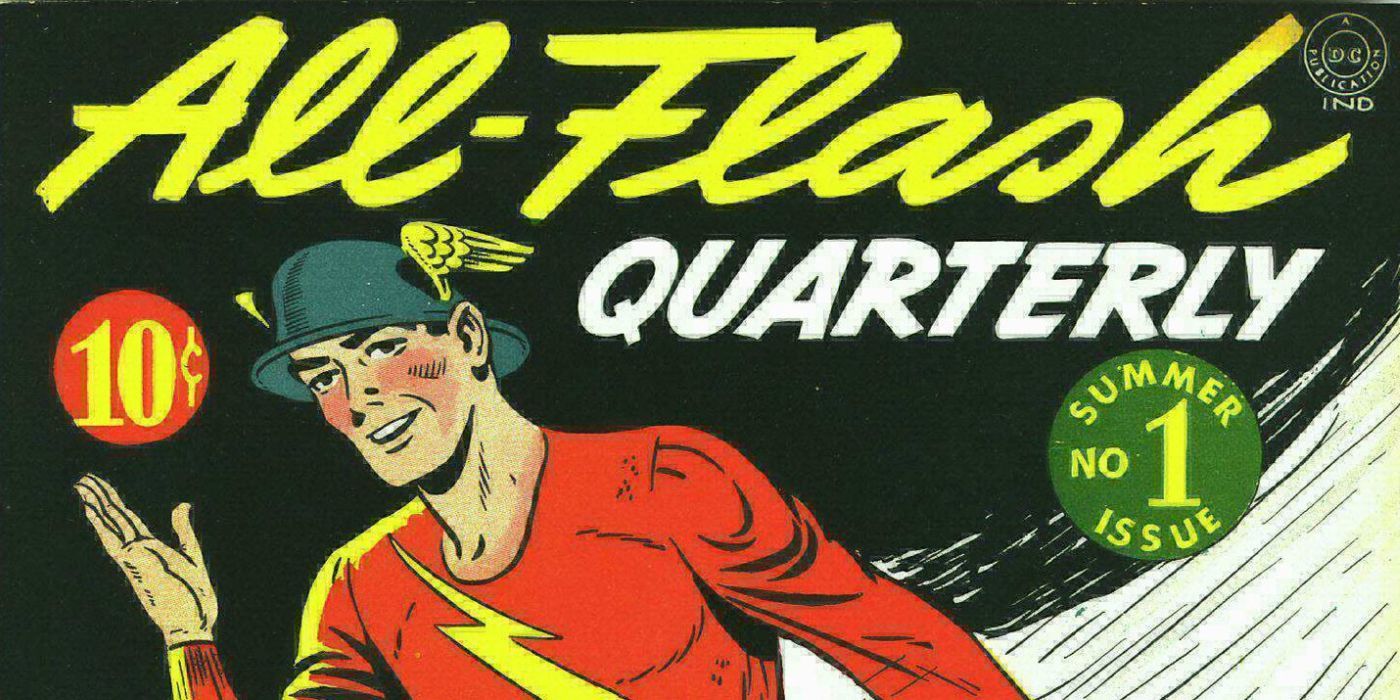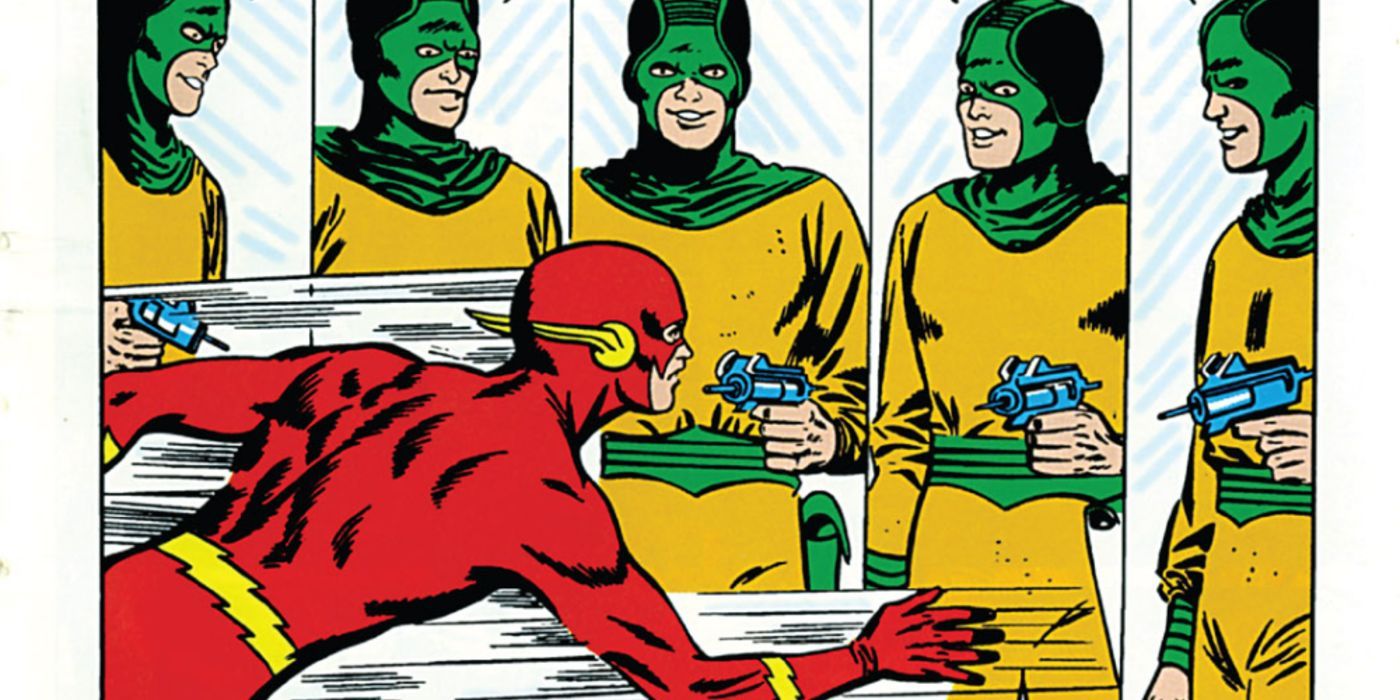Published by All-American Publications, which would be incorporated into DC Comics in 1946, Flash Comics #1 included the first-ever comic book appearance of DC’s fastest hero: the Flash. The issue was released to the masses in 1940, and featured the speedster front and centre on a cover drawn by Sheldon Moldoff.
Contrary to what the title might suggest, though, Flash Comics was not a standalone comic book series—it was an anthology that featured several other characters other than the Jay Garrick incarnation of Flash. In the very first issue, the speedster debuted along with other mighty heroes such as Hawkman, Johnny Thunder, Cliff Cornwall, and The Whip. Flash Comics #1, therefore, was as much about these characters as it was about the Flash.
10 The Issue Was Published During The Golden Age
One of the most revered periods in the history of comic books is the suitably named Golden Age of Comic Books. Starting from 1938 to 1956, the age gave rise to quite a few iconic superheroes, such as Batman, Captain America, and Superman, and began the world’s obsession with comic books and superpowers.
Having been published in 1940, in the early stage of the Golden Age of Comic Books, Flash Comics #1, too, was an integral part of this exclusive club. And so were the superheroes introduced in it—Flash, Hawkman, and Johnny Thunder.
9 Rod Gaynor Took Up The Identity Of The Whip
Created by John Wentworth and George Storm, Rod Gaynor was just another rich playboy who had too much time on his hands. Instead of wasting his money pursuing a lavish lifestyle, though, Rod decided to go on a tour of the land, which in turn led to the start of a new period in his life.
Upon coming to Seguro in New Mexico, he ended up meeting someone called Marisa Dillon, who in turn made him aware of how the poor were being taken advantage of by landowners. Taking inspiration from Don Fernando Suarez, the legend of a man who worked as the vigilante called The Whip, Rod took up that very pseudonym and made it his own in order to help the downtrodden without ever revealing his own identity. His introduction in Flash Comics #1 was only the start of a long journey for the masked hero.
8 The Legend Of Hawkman Was Birthed
Created by Gardner Fox and Dennis Neville, Hawkman debuted in the pages of Flash Comics #1 as the Egyptologist Carter Hall. During the course of his work, he chanced upon a dagger that made him remember his past life as Prince Khufu of Egypt. He could even recall that he and his partner, Shierra, were murdered by the very same sharp object by his nemesis Hath-Set.
In quick succession then, he came across the reincarnations of Shierra and Hath-Set, and realised that the past could very well be repeating. That's when he decides to come up with the guise of Hawkman to defeat Hath-Set, now called Doctor Hastor, in this life at least.
7 Cliff Cornwall Tried To Find A Missing Fleet
Unlike the rest of the characters in the issue, Cliff Cornwall was an FBI agent who relied more on his quick-thinking and skills at espionage rather than a superb ability to solve crimes and apprehend criminals. In Flash Comics #1, the Gardner Fox-and-Sheldon Moldoff creation started off trying to figure out where a fleet of US Bombers could have disappeared to. All they know is that the planes were last sighted in Alaska.
But the moment he arrived in Alaska, Cliff is attacked from all sides—first by a plane and then a gun-toting woman who mistakes him for someone else. That’s only the start, though; there’s a lot of action lying ahead for our favourite FBI agent, Cliff Cornwall.
6 Johnny Thunderbolt Was Destined For Greatness
Johnny Thunder’s first-ever comic book appearance started on an exciting note, wherein the titular character, a creation of John Wentworth and Stan Aschmeier, was kidnapped from his home when he is only a year old. The crime was committed by a few people from Badhnisia, who believed that the little one would become a powerhouse upon reaching the age of seven.
All sorts of mystical ceremonies were performed, one which involved the term “Cei-U”, but in the end, after a few years, Johnny came back home and lived a normal life. And then, one day, Johnny Thunder accidentally uttered the words “say you” in the middle of a conversation, imitating the pronunciation of “Cei-U”, and his life completely changed from thereon.
5 A Lab Accident Transformed Jay Garrick Into The Flash
Like Spider-Man, who derived his power from a science-related accident, Jay Garrick (the original Flash), too, got into a mishap and found himself changed as a result of it. Instead of a radioactive spider, though, the inhalation of "hard water gas" was the source of Garrick’s superpowers.
Thus began the story of Flash, who was developed into a character by writer-artist duo Gardner Fox and Harry Lampert. After realising the nature of his powers—that he can think and run exceedingly fast—Jay then moved to New York to take on a “normal” job, as an assistant professor, while starting his life as the superhero called Flash.
4 A Ventriloquist Was Plagued By His Dark Thoughts
Apart from Flash and the other heroes, Flash Comics #1 also had a text-only, two-pages long story by Gardner Fox called "Warfare in Space”; a single page that was all about stamps; as well as a “picture novel” about an incarcerated ventriloquist who seems to be losing his mind in prison.
Titled "The Demon Dummy" and written by Ed Wheelan, the story was about a ventriloquist called Harry Dunstan who was framed for a killing by a calculating detective (Jim Devlin) who was in love with the same woman Harry was. It was a challenging time for him in prison, with the only company for his dark thoughts being his dummy (named Red). Even when he finally got out, after it was found that Jim had been the murderer all along, he couldn’t let go of the darkness inside him. He needed revenge. And he needed it now.
3 Hawkman Changed Egyptian Mythology A Bit
Hawkman’s debut story involves a villain called Hastor, who is believed to be the reincarnation of Hath Set, a priest of Anubis. After coming to know of this, Hawkman decided to wear a costume that would be able to intimidate the Anubis-worshiping man.
In truth, Anubis is a jackal-headed god, but in the Hawkman comic he was presented as “the Hawk god” who became the primary influence for Hawkman’s outfit design. Even when a statue of Anubis was shown in the comic, it was shown with the head of a hawk not a jackal.
2 Flash Was Given A Standalone Series
For a while, from 1941 to 1947, Flash fronted a comic book series that was all about him. There were a few tiny features—such as Fat and Slat by Ed Wheelan and Ton-O-Fun by Harry Lampert—that accompanied the series, but the focus was always on the speedy superhero.
The series itself was initially called All-Flash Quarterly but later lost the “Quarterly” to just become All-Flash a while later. It only ran for 32 issues, but when the year 2007 came around, writer Mark Waid and a team of artists consisting of Manuel Garcia, Daniel Acuna, Karl Kerschl, and Joe Bennett blessed fans with a special, one-shot issue of the title.
1 The Imprint Was Cancelled And A New One Was Started In Its Place
Despite the historical importance of Flash Comics, its reign didn’t last quite long. In 1949, nearly ten years into existence, it all came to an end with the 104th issue. In its place, a new imprint called The Flash was released into the world in 1959. It continued Flash Comic’s numbering system, making the first ever issue of The Flash carry the number 105 instead of 1, which would have been the natural choice for a brand new series.
By this time, Jay Garrick was long gone and Barry Allen had taken his place as the Flash. The character had been introduced a few years prior, in 1956, and was the creation of writer-artist duo Robert Kanigher and Carmine Infantino. Even now, Barry’s the one who’s considered the most prominent of all Flash incarnations.

